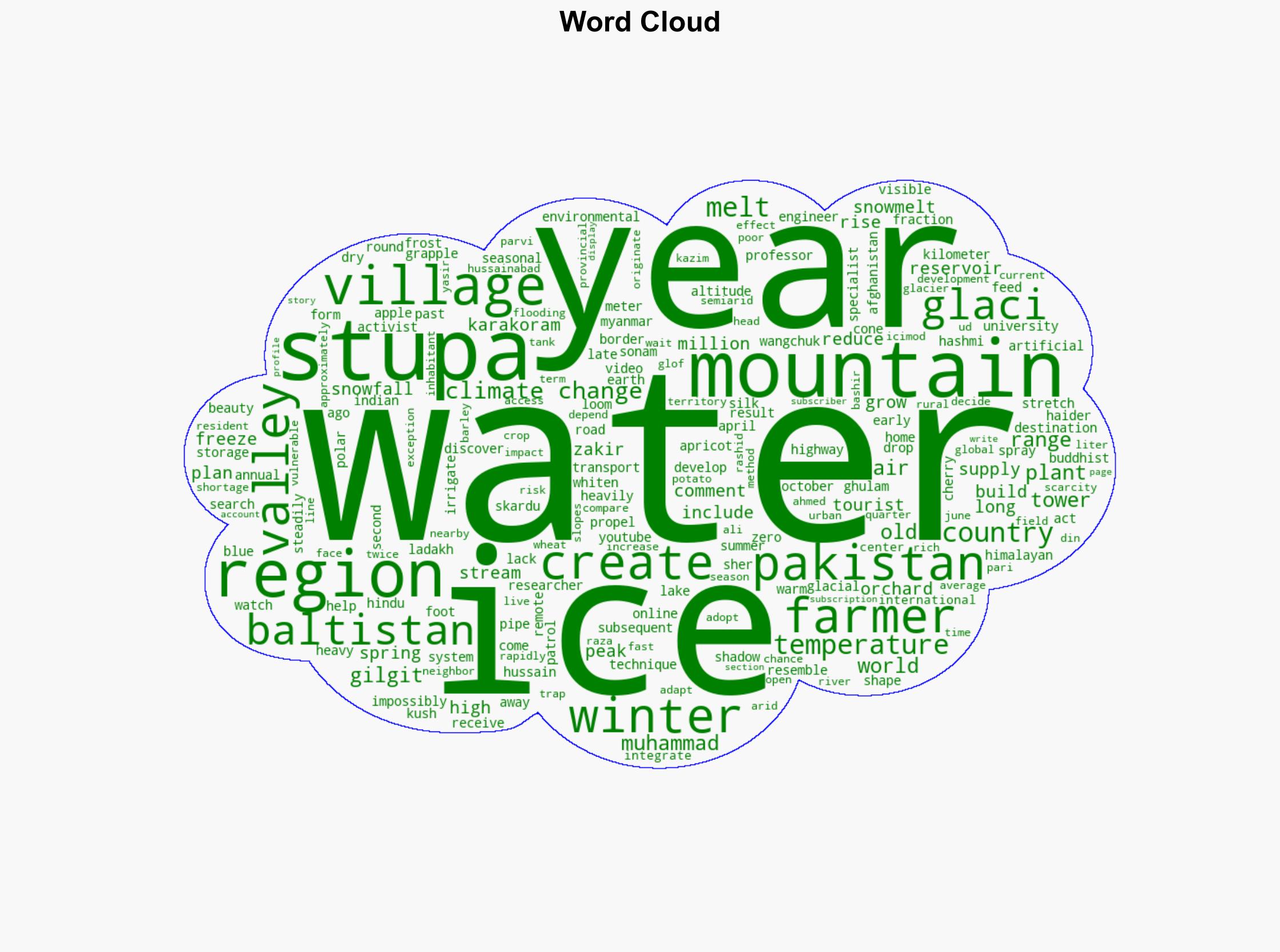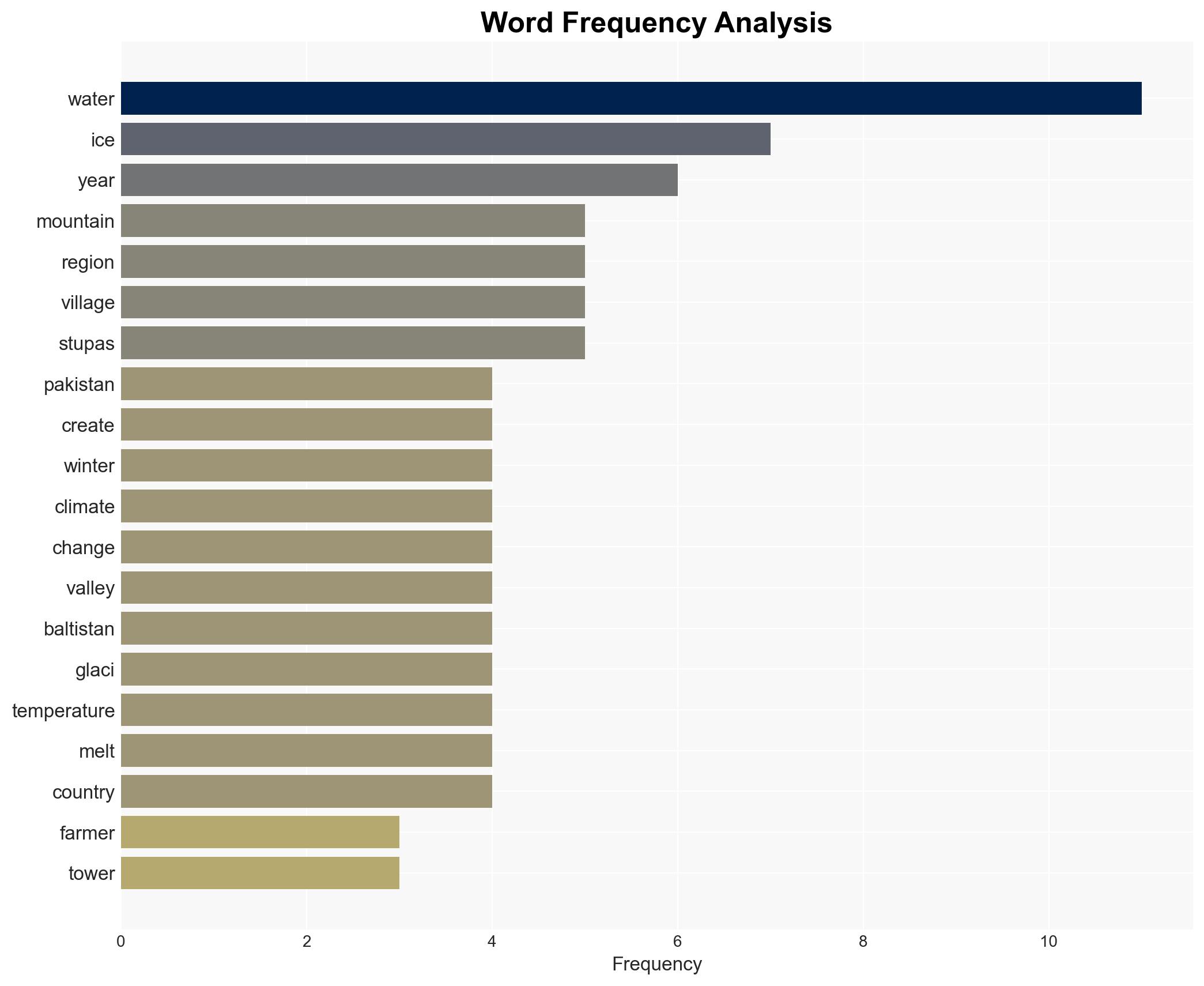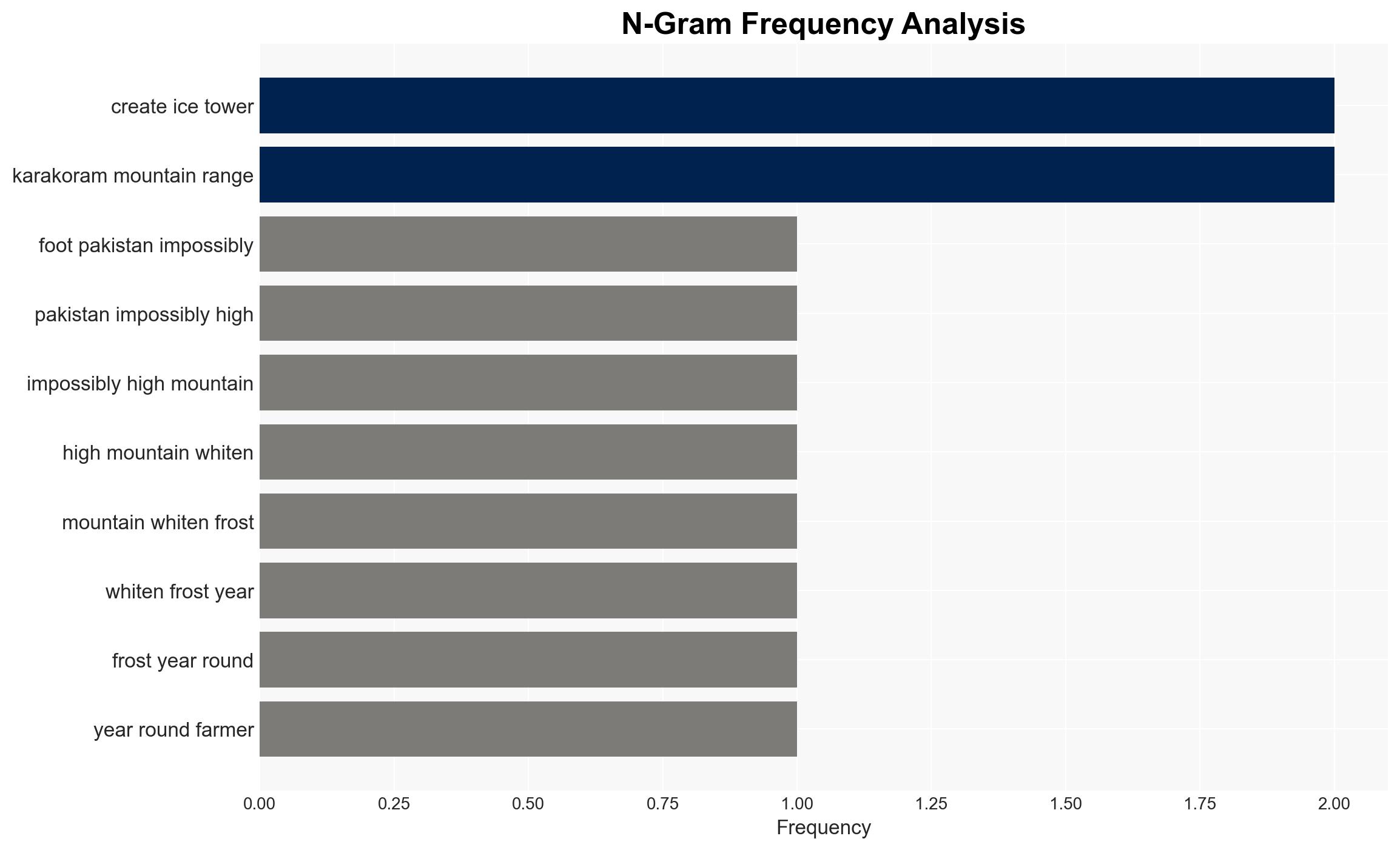Artificial glaciers boost water supply in northern Pakistan – The Japan Times
Published on: 2025-04-06
Intelligence Report: Artificial Glaciers Boost Water Supply in Northern Pakistan – The Japan Times
1. BLUF (Bottom Line Up Front)
The implementation of artificial glaciers in northern Pakistan, particularly in the Gilgit-Baltistan region, has emerged as a strategic adaptation to counteract water scarcity exacerbated by climate change. This initiative, inspired by techniques developed in neighboring regions, aims to provide a sustainable water supply for agricultural purposes. Immediate actions are recommended to support and expand this initiative to enhance regional water security and mitigate climate change impacts.
2. Detailed Analysis
The following structured analytic techniques have been applied for this analysis:
General Analysis
The artificial glacier project involves creating ice towers during the winter months to store water, which then melts gradually in the spring, providing a steady water supply. This technique, observed by Ghulam Haider Hashmi and inspired by Sonam Wangchuk, has been adapted to local conditions in the Skardu Valley. The ice towers, resembling Buddhist stupas, effectively act as reservoirs, mitigating the effects of reduced snowfall and glacial melt. This approach is crucial for sustaining agriculture in the region, where traditional water sources are becoming unreliable.
3. Implications and Strategic Risks
The artificial glacier initiative presents several strategic implications:
- Potential to significantly improve water availability for agriculture, thereby enhancing food security.
- Reduction in the risk of water-related conflicts in the region.
- Increased resilience against climate change impacts, particularly in arid and semi-arid areas.
However, there are risks associated with the scalability and sustainability of this initiative. The reliance on local expertise and resources may limit widespread adoption. Furthermore, geopolitical tensions in the region could impact cross-border collaborations essential for knowledge exchange and technological support.
4. Recommendations and Outlook
Recommendations:
- Encourage government and international support to expand the artificial glacier initiative across other vulnerable regions.
- Invest in research and development to refine and optimize the technology for broader application.
- Facilitate regional cooperation to share best practices and resources.
Outlook:
In the best-case scenario, the artificial glacier technique could be widely adopted, significantly enhancing water security and agricultural productivity. In the worst-case scenario, lack of support and geopolitical tensions could hinder progress, leaving the region vulnerable to water scarcity. The most likely outcome involves gradual expansion and improvement of the technique, contingent on continued local and international support.
5. Key Individuals and Entities
The report mentions significant individuals such as Ghulam Haider Hashmi, Sonam Wangchuk, Zakir Hussain Zakir, Sher Muhammad, Muhammad Raza, Ali Kazim, Bashir Ahmed, Yasir Parvi, and organizations like the International Center for Integrated Mountain Development (ICIMOD) and GLOF Pakistan. These individuals and entities play crucial roles in the development and implementation of the artificial glacier initiative.





